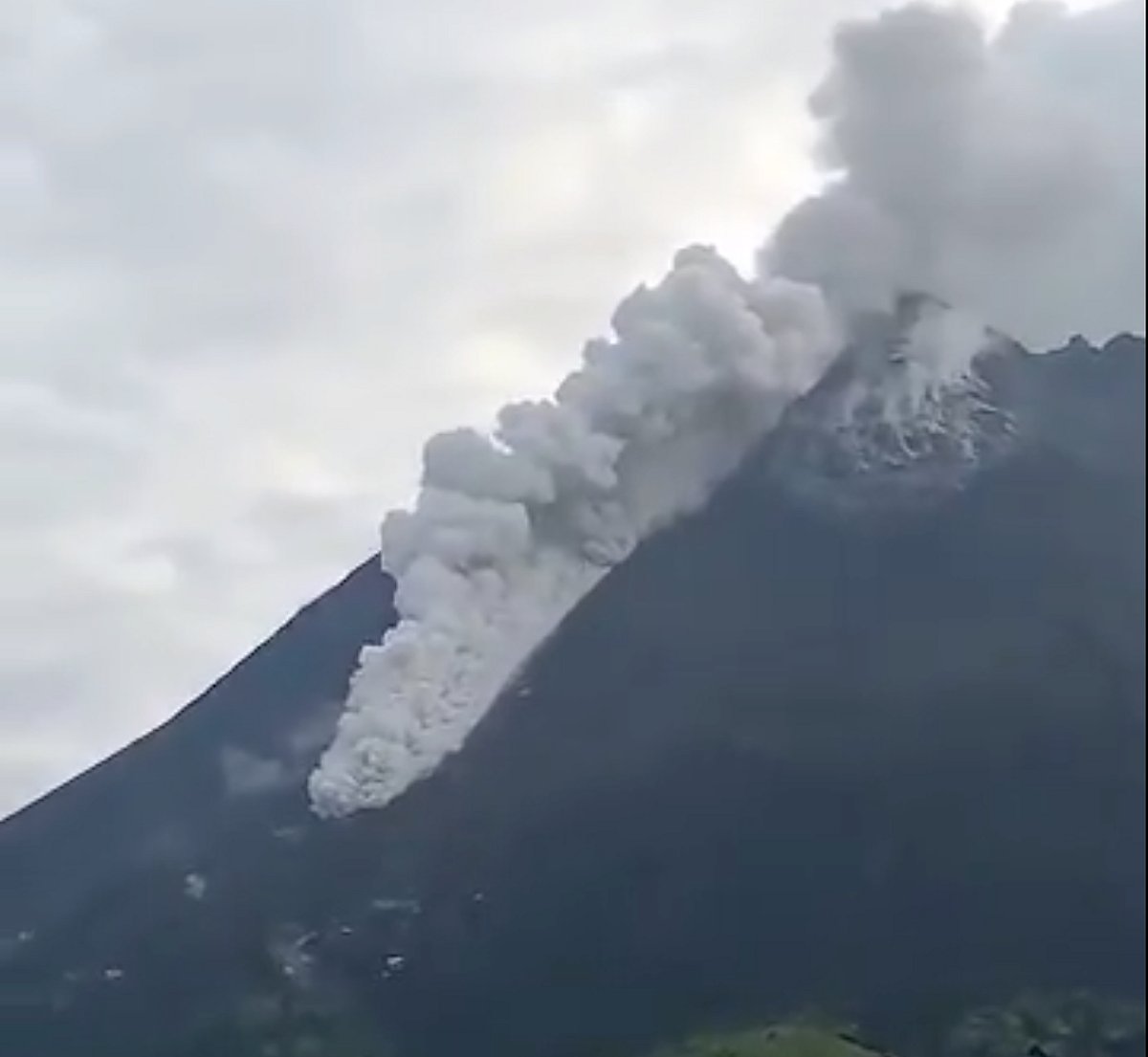Mount Merapi Eruption Raises Alarms in Indonesia
Mount Merapi, known as Indonesia’s most active volcano, erupted on October 29, 2025, releasing significant ash and smoke into the atmosphere. This event is part of an ongoing series of eruptions that have persisted since December 2020, raising alarms for local communities and authorities alike.
Ongoing Volcanic Activity
The recent eruption follows a notable event in January 2025, which generated pyroclastic flows extending up to 2 kilometers. Mount Merapi, located about 28 kilometers north of Yogyakarta, has a long history of eruptions dating back to 1548, making it a persistent threat to nearby populations.
Current Monitoring and Risks
According to the Volcanology and Geological Hazard Mitigation Center (BPPTKG), the volcano has shown increased seismic activity and lava flows, particularly affecting its southwest and west flanks in 2023. Currently, Mount Merapi is classified at level 4, indicating a high risk of further eruptions. Local authorities are actively monitoring the situation and preparing for potential evacuations if necessary.
FAQs
What should residents near Mount Merapi do during an eruption?
Residents are advised to stay informed through official channels, prepare emergency kits, and follow evacuation orders if issued by local authorities.
How often does Mount Merapi erupt?
Mount Merapi has a history of frequent eruptions, with significant activity recorded since 1548. The volcano has been particularly active since December 2020.
What is the significance of the volcano’s level 4 status?
A level 4 status indicates a high risk of eruption, prompting heightened monitoring and preparedness measures from local authorities to ensure the safety of nearby communities.
Conclusion
The recent eruption of Mount Merapi underscores the ongoing volcanic threat in Indonesia. Authorities continue to monitor the situation closely, and residents are urged to remain vigilant and prepared for any further developments.
Mount Merapi’s eruptions are closely monitored due to their potential impact on surrounding communities. The volcano’s activity is influenced by its geological setting, as it is part of the Pacific Ring of Fire, a region known for its high seismic and volcanic activity. This area is characterized by tectonic plate movements that can lead to the formation of volcanoes and frequent earthquakes. The Indonesian archipelago, being situated on this tectonic boundary, experiences significant geological events, making it crucial for local authorities to maintain a robust monitoring system.
In addition to the immediate dangers posed by eruptions, such as ashfall and pyroclastic flows, there are longer-term environmental concerns associated with volcanic activity. Ash can contaminate water supplies, disrupt agriculture, and affect air quality, leading to health issues for residents. The economic impact can also be substantial, particularly for communities that rely on agriculture and tourism. Authorities often implement measures to mitigate these risks, including establishing exclusion zones around the volcano and providing education on emergency preparedness.
The Indonesian government has invested in improving its disaster response capabilities, particularly in areas prone to volcanic activity. This includes enhancing early warning systems and conducting regular drills to ensure that residents are familiar with evacuation procedures. Community engagement is also a vital component of disaster preparedness, as local populations are encouraged to participate in training sessions and to stay informed about the volcano’s status. The collaboration between government agencies, scientists, and local communities is essential in minimizing the risks associated with Mount Merapi’s eruptions and ensuring the safety of those living in its vicinity.
As the situation develops, the BPPTKG continues to provide updates on the volcano’s activity, utilizing advanced technology to monitor seismic events and gas emissions. This data is crucial for assessing the potential for future eruptions and for informing the public about safety measures. The ongoing eruptions serve as a reminder of the dynamic nature of Indonesia’s geology and the importance of preparedness in the face of natural disasters. Local residents are encouraged to remain vigilant and to heed any warnings issued by authorities as they navigate the challenges posed by living in close proximity to one of the world’s most active volcanoes.
Also Read:
Lake D Renovation in JLT Sparks Community Concerns







